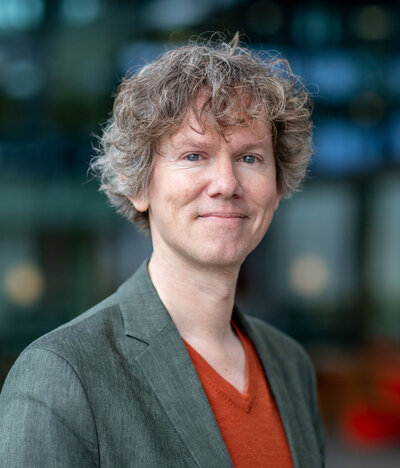Martijn Anthonissen
Department / Institute

RESEARCH PROFILE
Martijn Anthonissen works in the Computational Illumination Optics group at TU/e. The basic goal in illumination optics is to design an optical system that turns a given light source and into a desired light output. Typical applications are LED lighting, road lights and car headlights.
The industry standard is to design an optical system, use ray tracing to test it, change the design, ray trace and so on. This is quite a slow process.
The Computational illumination Optics group develops inverse methods that directly compute the required optical system. These methods are based on advanced physical models describing the interaction of light with lenses and reflectors. The ultimate goal is to develop advanced simulation tools that can be used for virtual prototyping.
Before joining the optics group, Martijn has worked on many applications, such as combustion, glass sintering, transport of tracers in anisotropic turbulence, film cooling, laser surface remelting, wafer positioning, lens deformation, cathodic protection for ships and wind-farm aerodynamics.
Theory and experiments have driven science forward for centuries. The explosion of computational power gives us a new way to increase our knowledge through numerical simulations. This is an exciting era of scientific computing!
ACADEMIC BACKGROUND
Martijn Anthonissen studied mathematics at TU/e. After his master’s program he was selected for the Japan Prizewinners Program, a one-year postgraduate course for twenty recently graduated Dutch students. Within this framework he lived in Tokyo and worked at the Hitachi Group Headquarters for seven months.
Upon returning to the Netherlands, Martijn started a PhD research on numerical combustion. He currently works in the Computational Illumination Optics group. Martijn has made several extended research visits abroad and worked at Yale University (New Haven, Connecticut, USA), Weierstrass Institute for Applied Analysis and Stochastics (Berlin, Germany), Japan Women’s University (Tokyo, Japan), National Institute of Technology Karnataka (Surathkal, India) and Università degli Studi di Perugia (Perugia, Italy).
Martijn teaches a variety of mathematics courses. He has been involved with TU/e’s teacher training program in mathematics (Eindhoven School of Education) and with the educational management of the graduate program in Industrial and Applied Mathematics.
Recent Publications
-
Robert A.M. van Gestel,Martijn J.H. Anthonissen,Jan H.M. ten Thije Boonkkamp,Wilbert L. IJzerman
An ADER discontinuous Galerkin method on moving meshes for Liouville's equation of geometrical optics
Journal of Computational Physics (2023) -
Vì C.E. Kronberg,Martijn J.H. Anthonissen,Jan H.M. ten Thije Boonkkamp,Wilbert L. IJzerman
Three-dimensional freeform reflector design with a scattering surface
Journal of the Optical Society of America A: Optics and Image Science, and Vision (2023) -
A.H. van Roosmalen,M.J.H. Anthonissen,W.L. IJzerman,J.H.M. ten Thije Boonkkamp
Fresnel reflections in inverse double freeform lens design
Journal of the Optical Society of America A: Optics and Image Science, and Vision (2023) -
Antonio Barion,Martijn J.H. Anthonissen,Jan H.M. ten Thije Boonkkamp,Wilbert L. IJzerman
Computing aberration coefficients for plane-symmetric reflective systems: A Lie algebraic approach
Journal of the Optical Society of America A, Optics, Image Science and Vision (2023) -
Vì C.E. Kronberg,Martijn J.H. Anthonissen,Jan H.M. ten Thije Boonkkamp,Wilbert L. IJzerman
Two-dimensional freeform reflector design with a scattering surface
Journal of the Optical Society of America A, Optics, Image Science and Vision (2023)
Ancillary Activities
No ancillary activities